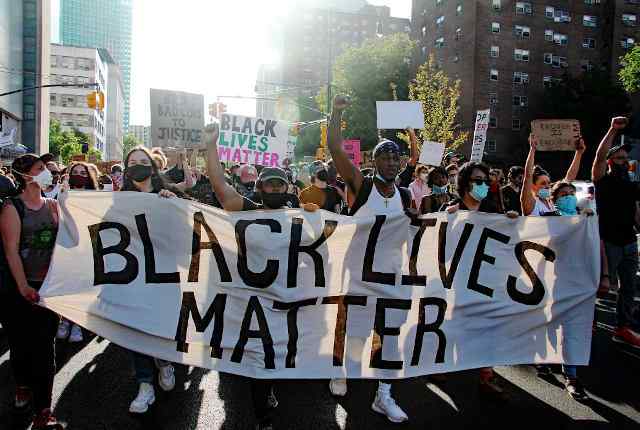On Monday, the U.S. Supreme Court made a ruling that permits the progression of a lawsuit against a Black Lives Matter activist, which was filed by a Louisiana police officer injured during an incident in 2016.
This particular case has the potential to create obstacles for violent protesters seeking to evade accountability for causing harm to law enforcement officials.
“In declining to hear DeRay Mckesson’s appeal, the justices left in place a lower court’s decision reviving a lawsuit by the Baton Rouge police officer, John Ford, who accused him of negligence after being struck by a rock during a protest sparked by the fatal police shooting of a black man, Alton Sterling,” Reuters reported.
In 2023, Mckesson’s argument asserting his protection under the First Amendment of the U.S. Constitution, safeguarding his rights to free speech and assembly, was dismissed by the 5th U.S. Circuit Court of Appeals based in New Orleans. The activist was being represented by lawyers from the American Civil Liberties Union (ACLU).
Reuters added:
“The Baton Rouge protest was one of numerous demonstrations in the United States in 2015 and 2016 arising from incidents involving police and Black individuals. These predated the massive racial justice protests that flared in various cities in the United States and abroad following the 2020 murder of George Floyd, a Black man, by a white police officer in Minneapolis.
“The 5th Circuit’s decision to allow Ford’s lawsuit could make it easier to sue protest leaders for the illegal conduct of an attendee – an outcome that, according to some legal scholars, could stifle activism seeking political or societal change.”
Blane Salamoni, the police officer responsible for the shooting and killing of Sterling on July 5, 2016, was promptly suspended and later terminated from his position in the Baton Rouge Police Department. Following a civil rights investigation conducted by the Justice Department, no evidence was found to support federal criminal charges, leading to the closure of the probe on May 3, 2017. The investigation revealed that Sterling, who was engaged in the illegal sale of bootleg CDs, refused to comply with the officers’ instructions and resisted arrest by engaging in a physical altercation with them.
Within seconds of the struggle commencing, another officer named Howie Lake deployed a taser on Sterling, but he managed to overcome its effects and continue resisting. During the altercation on the ground between Salamoni and Sterling, the former noticed a firearm in the suspect’s pocket and immediately alerted Lake that Sterling was attempting to reach for it, coinciding with the first shots being fired.
The DOJ report added: “Investigators later confirmed that Sterling’s gun was loaded with six bullets at the time of this exchange.”
Baton Rouge police officer “Ford was among the officers assigned to make arrests of protesters on a public highway. He was struck in the face by a rock or piece of concrete hurled by an unidentified person, losing teeth and suffering head and brain injuries, according to his lawsuit,” Reuters reported.
“Ford’s lawsuit, seeking monetary damages, argued that McKesson should have known from his actions leading the protest that it would turn violent,” the outlet reported further.

